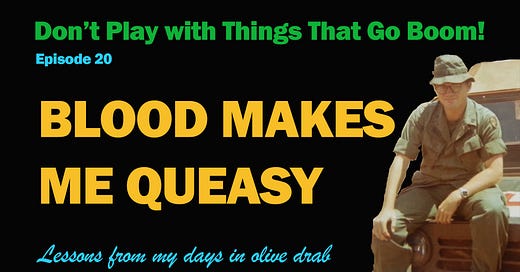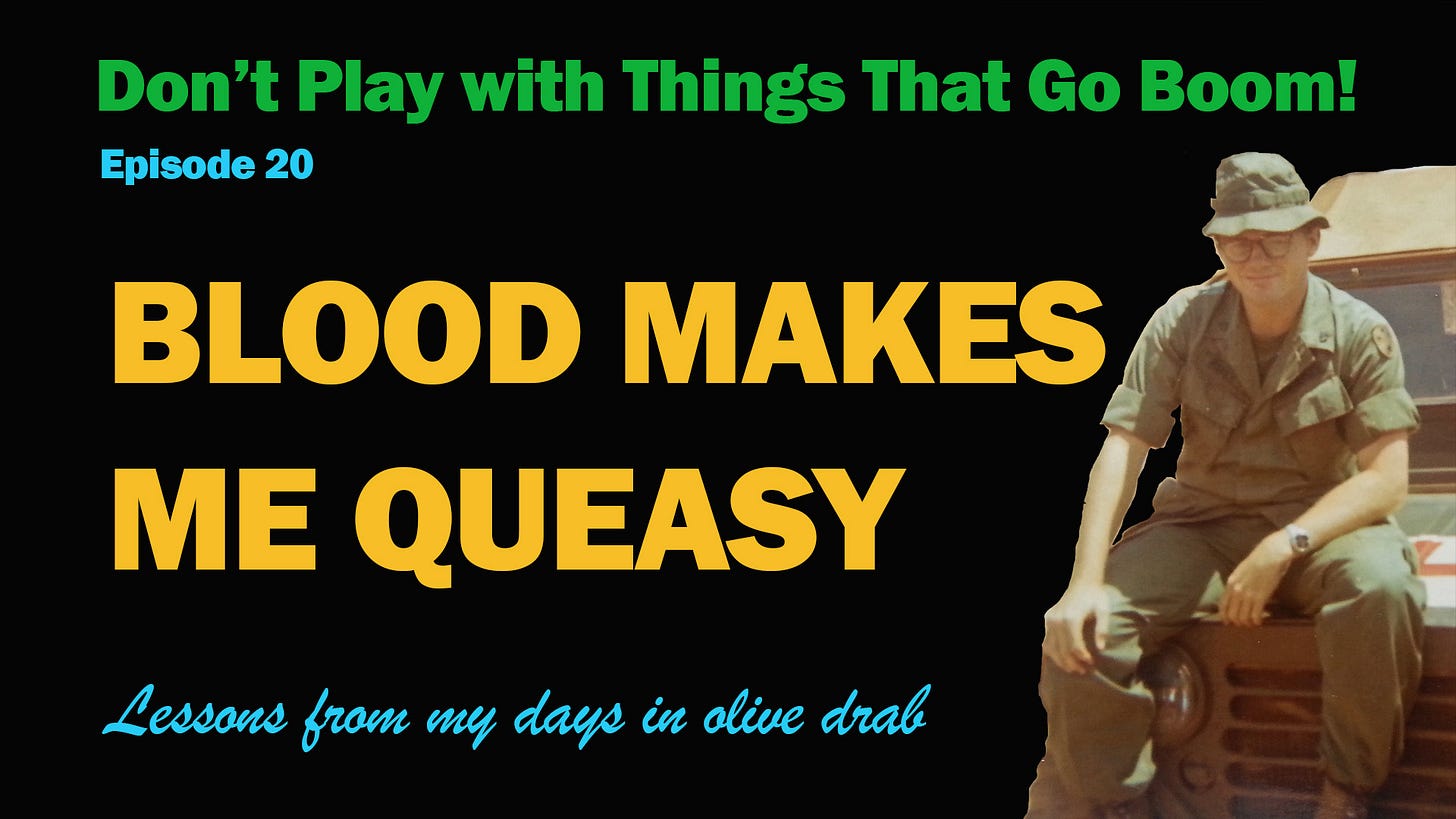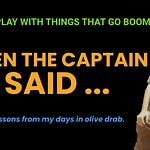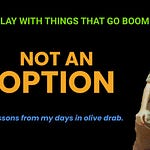My New Home
My new room was a small space with two beds in it.
But it was a room. It wasn’t a culvert half stacked on top of ammo cans covered with sandbags. I could stand up and walk around in it. It was a real room. It had a ceiling. It had walls. It had a floor, not dirt. It had a real floor. It even had a door.
It was a real room.
And the beds weren’t cots. They were beds. They were made of metal frames and had soft mattresses on springs.
We’re talking luxury.
I did notice that one bed was surrounded by mosquito netting from the ceiling and covered the entire bed with the ends of the netting tucked under the mattress.
The other bed didn’t have mosquito netting.
Of course I was assigned the bed without the mosquito netting but was told my netting would arrive in a couple of days. I didn’t think that was a problem. I hadn’t noticed any mosquitoes since arriving on Hawk Hill.
That first night, I lay down in my very comfortable bed in my spacious new room and went to sleep enjoying the latest adventure in my military journey.
Then I woke up.
I wasn’t sure why.
Something just felt strange.
I couldn’t make out what it was.
There weren’t any mosquitoes. But something wasn’t right. I could hear sounds. Very quiet sounds. I tried to focus on where the sounds were coming from.
They seem to be coming from above my head. And it seemed like something was moving on the ceiling.
My eyes adjusted to the lack of light, and I realized what that something was. There were dozens of bugs crawling across the ceiling. I could almost hear their footsteps.
And then … THUD … one of them fell on me.
It felt like a little golf ball. But it didn’t stay where it landed. Instead, it ran across my body and off the side of the bed onto the floor.
THUD.
Another one of the things fell off the ceiling and landed on me. It also ran across my body and disappeared off the side of my luxurious bed.
It didn’t take long for me to realize the bugs that were running across the ceiling regularly fell off the ceiling and landed on me.
At first they looked like little black cockroaches — which was bad enough — but when I got some light on them and they spread their wings they were something very different.
Underneath the dark wings were bright colors — red, green, yellow — and then there were their mouths … or mandibles … or whatever they call those things on bugs. They looked like sharp pincers that could impale and crush anything they attacked.
I grant you they were only about an inch or an inch-and-half in length, but they were scary looking. They were jungle bugs beyond anything I could have imagined.
THUD. THUD.
That’s when I realized the mosquito netting wasn’t to protect us from mosquitoes. The netting was designed to keep bugs from falling on us during the night.
THUD.
Needless to say, I didn’t sleep well until my mosquito netting arrived.
The Training Begins
After my first night of surviving bugs falling on me, my training officially began.
Initially I was assigned the job of checking people in — paperwork — and taking vitals — blood pressure, temperature, heart rate. Stuff like that.
My concern, however, was a particular trait that I had. It probably wasn’t a good trait for someone training to become a medic.
The sight of blood made me just a little bit queasy.1
I think part of the problem was, if the blood was anything more than a little cut requiring a band aid, I had no idea what to do. I could only imagine what I would be like if I saw arms or legs blown off or saw blood pouring out of a wound. I don’t think my reaction would have been helpful.
Whatever the reason, I knew it was something I had to deal with.
Fortunately, the doctor began at my level and taught me what I should do if I didn’t know how to deal with a specific injury. He stressed the importance of remaining calm, and projecting that calm to the patient, keeping the patient from going into this thing he called “shock.”
Doc explained what shock was, how it could hurt the patient, and the steps I could take to prevent it from happening to the one I was caring for … until someone who knew what they were doing arrived to help.
The way he explained it made it clear to me that this was something I could do.
That helped me a lot, and I was able to use the techniques he shared several times, even before I learned how to deal with specific injuries.
I’d never seen this before
In fact, I remember one night I was talking with one of the medics. It was a pleasant conversation about our lives before the Army and what home was like.
Then something strange happened. He stopped talking. His eyes glazed over and he collapsed.
As if that wasn’t bad enough, his body stiffened and began to shake. He couldn’t talk. He couldn’t respond. He just twitched and shook.
I had no idea what was happening or how I could help him.
I spoke as calmly as I could and tried to reassure him everything would be all right. But I’d never seen anything like this before. His rigid body just kept shaking.
Fortunately, a couple of other medics were nearby and they knew exactly what to do.
They went right to work on him and only a few minutes passed before his body stopped shaking and he was able to sit up. A few more minutes, and he was almost back to normal.
The doctor checked him out and then the medic went to rest in his bed protected by the mosquito netting.
The doctor had me sit down, and explained what had just happened. I had just seen a Grand Mal Seizure. Doc explained what a Grand Mal seizure was, and the damage it could cause. Then he taught me how I should deal with it if it happened in my presence in the future.
One-on-one training
After that, my training began in earnest.
At the end of the day’s work, the doctor would take me aside and give me a lesson. I found it absolutely enthralling. He explained about injuries and illnesses — how to recognize them and how to deal with them. And he told stories — how scientists discovered what worked and what didn’t.
He taught me how to do certain procedures and he was an excellent teacher.
Whether it was how to give shots or clean wounds or bandage injuries, I loved every minute of those lessons.
I want your blood
I remember when he taught me how to draw blood from a patient. He explained the proper procedure, what could go wrong, and how to prevent anything from going wrong. It was a good lesson. Clear. Understandable.
Then he excused himself, went to the refrigerator, pulled out a beer and began drinking. I believe he had a couple of beers before he came back.
He had a little bit of a glow about him and seemed happy and relaxed.
He smiled.
Then he rolled up his sleeve and held out his arm.
“Draw my blood,” Doc said.
He was serious. He wanted me to stick a needle in him and take blood from his arm. So, I cleaned the area, got the hypodermic needle, got a good vein, and tried to gently stick the needle in his arm.
The needle went in.
This was easy.
Then a large bulge appeared in his arm.
I pulled the needle out and just stared.
“No problem,” Doc explained. “It’s just a hematoma. I’ll take care of it.”
He explained what I had done wrong and how I needed to insert the needle.
This was not quite the way I wanted things to work out.
“Try again,” he said, as he held out his arm.
Again? He wanted me to stick him again?
So, I went through the procedure again. This time when I inserted the needle … another hematoma popped up in his arm.
“No problem,” Doc said. “Try again.”
Again he held out his arm, and this time I went into the vein and drew the blood without a hematoma popping up on his arm.
Doc had me try a few more times until he felt I had mastered the technique.
Then he got another beer and went to take care of the hematomas I had given him.
He was a great teacher.
Lessons from my days in olive drab
Which brings me to some of the lessons I learned during this phase of my Army life.
Be calm. This is important not just in situations involving physical injuries and the potential for a patient going into shock, but sometimes it’s important in dealing stress and life difficulties. I’ve had several opportunities to help people who have gone through physical and emotional injuries. God is in control. Share that attitude with the person you are working with.
What make a good teacher. The doctor was a great example of what a teacher should be. Not only did he share knowledge clearly and in an interesting way, but he also had his student — me — practice the skills he taught on himself.
Seizures. I never had another opportunity in the Army to use what I had been taught in dealing with a Grand Mal seizure. But a few years after I left the Army, I was married and had two kids, I remember one day when I heard a loud crash in another part of the house. I rushed into the room and saw my wife on the floor, her body stiff and shaking. She wasn’t able to talk or respond. If it hadn’t been for the experience I had in the Army, I would have had a major melt down. But I recognized the Grand Mal seizure and knew exactly what to do. I was able to keep her from hurting herself during the seizure and to comfort her as she came out it. I thank the Lord for that lesson He had given me during my time in the Army.
Queasy is an adjective that describes a feeling of nausea or uneasiness. I think you can see why that wouldn’t be such a good trait for a medic.












Share this post